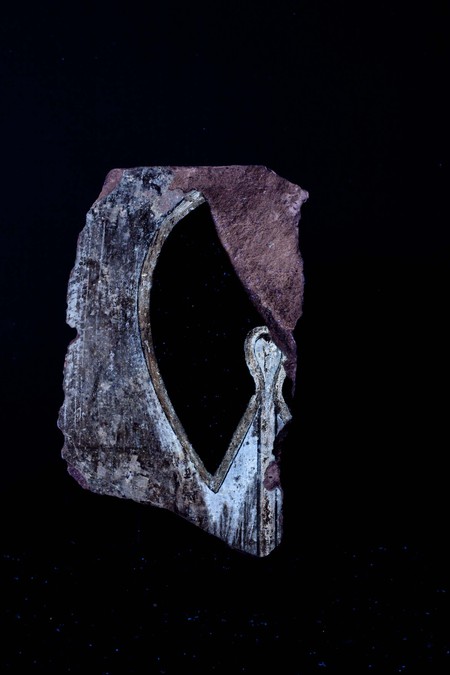Fragment from the Palace of Apries
Summary
Fragment with a lotus-leaf shaped blade in green, yellow and brown.
Description of object
A lotus-leaf shaped blade and the long vertical shaft of a fan is carved in relief and painted green, yellow and brown.
Choice of methods
Visual examination
- Macroscopic
- Microscopic in situ
Technical imaging
- UV
- VIL
- Raking light
Sampling
- Cross section
- Microscopy
- XRF
Visual examination
.
Bibliography
C. Brøns, K. Lund Rasmussen, M. Melchiorre di Crescenzo, R. Stacey, A. Lluveras-Tenorio (2018) Painting the Palace of Apries I: Ancient binding media and coatings of the reliefs from the Palace of Apries, Lower Egypt, Heritage Science 6:6 “https://heritagesciencejournal.springeropen.com/articles/10.1186/s40494-018-0170-9”:
S. Hedegaard, T. Delbey, C. Brøns, K. Rasmussen, Painting the Palace of Apries II: ancient pigments of the reliefs from the Palace of Apries, Lower Egypt. Heritage Science. 7 (2019), doi:10.1186/s40494-019-0296-4.
T. Bagh (2011), Finds from W.M.F. Petrie’s Excavations in Egypt in the Ny Carlsberg Glyptotek, in Meddelelser fra NyCarlsberg Glyptotek. No. 13 Copenhagen, 37-43.
M. Jørgensen (2009), Egypt IV Late Egyptian Sculpture 1080 BC-AD 400. Ny Carlsberg Glyptotek, Copenhagen, 92, cat. No. 26.2.
- ÆIN 1060
- Fragment
- 26th dyn. 589-568 BC
- Egypt: Late Period
- Limestone
- W. M. F. Petrie’s excavations at the north end of Memphis unearthed in 1909 remains of the royal palace of Apries. That same year the Glyptotek in Copenhagen received a number of painted limestone relief fragments belonging to the Palace.
- H 24.3 cm, W 14.6 cm, D 8.2 cm






